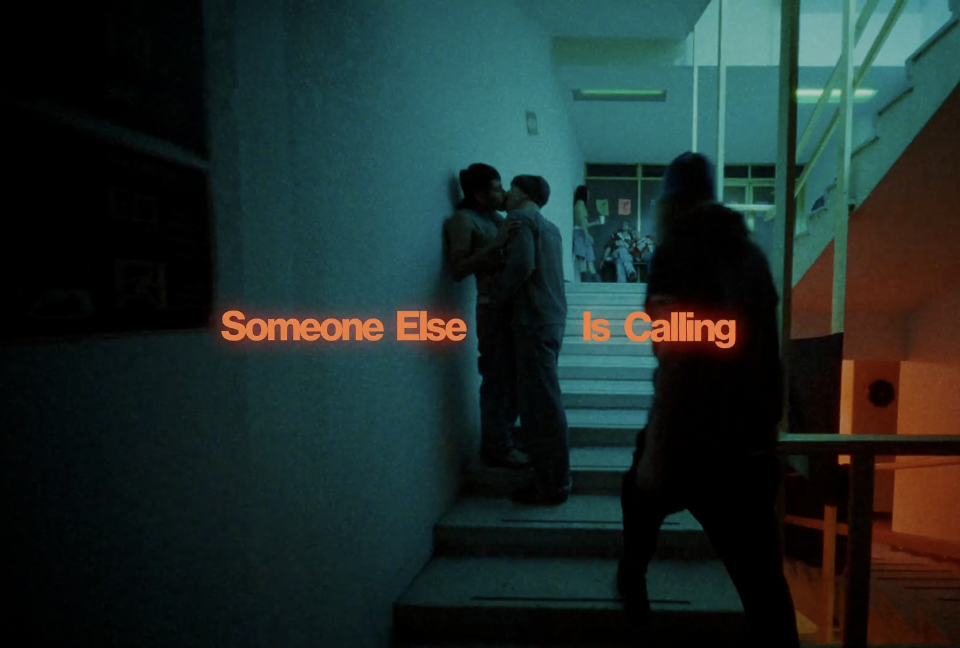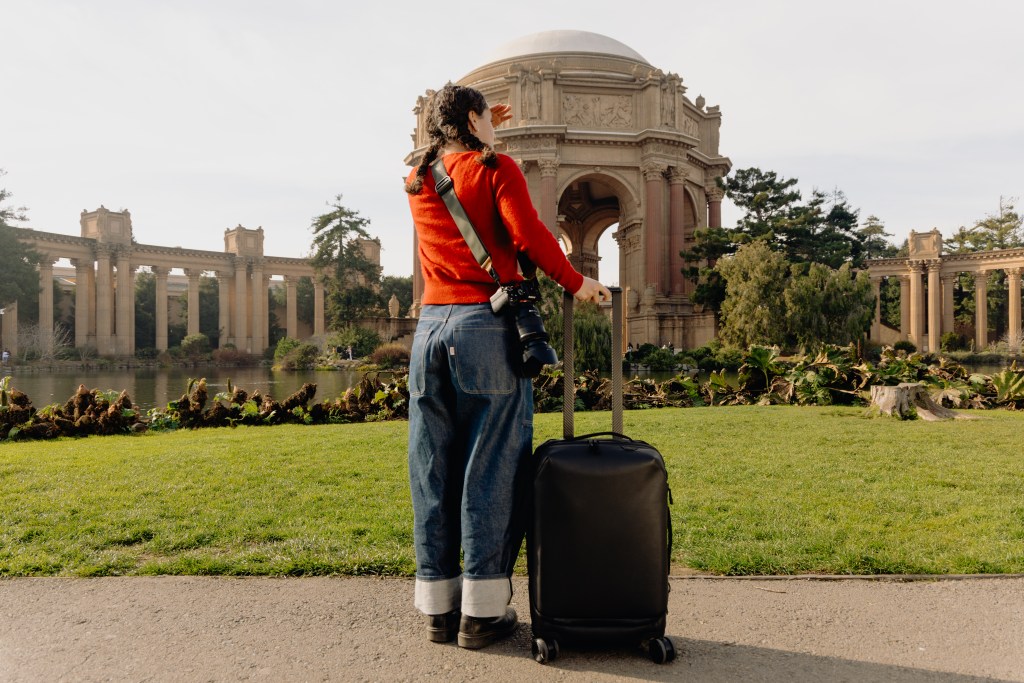Link About It: This Week’s Picks
3D-printed exoskeletons, free Getty, Play-Doh Oscars and more in our weekly look at the web
1. 3D-Printed Exoskeleton
Applications for 3D printing keep pushing the boundaries of design, art and science. The latest innovation is a robotic suit that acts as an exoskeleton—incorporating both 3D-printed components and mechanical parts—and assists paralyzed people with their walking and standing. Each suit is individually crafted: the wearer’s thighs and hips are scanned, then the components are printed to ensure comfort and capability. In development since 2005, the suit represents the wide-reaching, life-changing capabilities that 3D printing technology holds for the present and future.
2. UMBRA
Amsterdam-based photographer Viviane Sassen is hard at work; not resting since her book “Etan & Me” was released just last October. Her latest project, “UMBRA,” explores the ancient subject of light and darkness through 11 single prints by Sassen and poems by Maria Barnas, which London-based publisher Oodee has bound into a handsome book limited to 600 copies. For those lucky enough to live near Rotterdam, Netherlands, be sure to check out the book preview at the opening of Sassen’s solo exhibition at Nederlands Fotomuseum today, 8 March 2014.
3. The Oscars in Play-Doh
The Monday that followed the Academy Awards, the internet was plastered with photos, articles, GIFs and tweets about who-wore-won-what-wow. Wanting something a bit more tangible, AnOther Magazine reached out to artist and “Play-Doh aficionado” Eleanor Macnair—who’s known for rendering famous photographs in Play-Doh—to recreate high-fashion looks from Sunday using the modeling clay. What’s surprising is how she’s able to capture the ambience emanating from the real-life figures into this unusual medium.
4. “History Doesn’t Laugh”
Last week marked the opening of renowned American visual artist Hank Willis Thomas’ first solo show at Goodman Gallery’s Johannesburg location. In this illuminating interview, Thomas expounds on his new collection of perspective-shifting stills, exploring themes of race, politics and relativity including his intimate take on his place as an African American in post-apartheid South Africa. We were fortunate enough to be in Joburg for the show (and also see him honored by the American ambassador to South Africa), but for those who can’t see his work in person, this interview offers a rich, academic context to Thomas’ artistic practice from the man himself. Both complex and accessible, the ideas surrounding race, technology and art brought about in the interview represent required reading for the modern day.
5. Goat Simulator
What happens when you merge Tony Hawk’s Pro Skater with one of the internet’s most beloved subjects? Welcome to the world of Goat Simulator, a game created by Sweden’s Coffee Stain Studios, in which you maneuver a goat and earn points for causing mayhem and knocking into stuff—bonus points for backflips, butt-slides and licking. Goat Simulator is taking pre-orders and is planning to be released for Windows PC on 1 April 2014 on Steam. (Perhaps it’s a great April Fool’s joke.) With the game trailer just shy of three million views on YouTube, it’s clear the developers have latched onto something great.
6. The Sanitary Pad Revolution
Shortly after marrying his wife in 1998, Arunachalam Muruganantham discovered that his wife used rags during menstruation, as their family—living in southern India—could not afford to buy sanitary pads on a regular basis due to their relatively high price. Learning that similar women living in the surrounding villages resorted to using unhygienic materials such as sand, sawdust, leaves and ash (the Indian government would later find that only 12% of women in India use sanitary pads), he sought out to build a better, affordable sanitary pad by inventing a low-cost method of production—and employs women to make them. BBC News covers the story of Muruganantham’s journey as a high school dropout who revolutionized health practices for women in rural India.
7. Sustainable Manhattan Envisioned
A lot of energy goes into keeping NYC sleepless and ever-buzzing—from electricity to the food supply. But the city is primarily dependent on what falls outside its borders, so Terreform Research Group has just released a series of renderings depicting what a self-sustained NYC would look like. Rooftop green spaces and farms, repurposing an entire avenue for agriculture and waste management, and even massive farming towers were all envisioned in this alternate reality that’s entirely necessary for self-empowerment.
8. Corvettes in Sinkholes
When a 40-foot wide, 60-foot deep sinkhole opened beneath the National Corvette Museum in Kentucky, it swallowed up eight magnificent cars totaling around $1 million in value. Three of the cars (and counting) have been retrieved and remarkably, all appear salvageable. A 2009 ZR1 Blue Devil (the first pulled out) had minor damages but started up again. A 1993 Ruby Red 40th Anniversary Corvette didn’t fair quite so well, but Chevy’s spokesman said the car can and will be repaired. No news on when the other cars will eventually be retrieved, with the sinkhole still yet to be completely stabilized.
9. From Skate Rat to the Oscars: Spike Jonze
Taking home the Original Screenplay Academy Award for 2013’s runaway technology love story “Her,” writer and director Spike Jonze has solidified his place in mainstream Hollywood, but Jonze didn’t take the direct path (if there is one) to stardom. The longtime Jonze supporters at London-based Huck magazine sent their congratulations via retrospective, highlighting Jonze’s transition from making low-budget skate videos around LA with the likes of Jason Lee (a former pro skateboarder) and Mark Gonzales to auteur art projects like his fictional Torrance Community Dance Group. Jonze’s artistic range and willingness to commit to passion projects is part of what makes his career unique and is telling of future projects that will continue to hold our attention.
10. Nendo for Disney Japan
In what seems like an unlikely collaboration, highly influential design studio Nendo created a series of Winnie the Pooh-inspired furniture for Disney Japan. To reflect the bucolic setting of the beloved story, Nendo used a textural maple wood while adding slight hits of color and contrasting texture with knit elements to further characterize each piece. The work reflects a great design studio’s ability to cater to a client’s needs while still exemplifying and staying true to their artistic ethos.
11. Impossible Stairs
Calling to mind the warped realities of artist M.C. Escher, Lionel Penrose and his son Roger have created a new variation on their Penrose Triangle. This endless staircase is a 2D depiction of steps that make four 90-degree turns; in essence meaning a person will always be climbing on a loop, but never get any higher. The artwork is housed in Munich, but because of the laws of nature, it will never exist in three dimensions.
12. Free Getty
The world’s largest photo service, Getty Images, has long-been a resource for journalists and anyone else who could afford their prices. Recognizing their content was already everywhere (oftentimes uncredited), the service has made their photos free, by way of embed links. While no one can be certain of the longterm commercial effects, this is definitely a step in the right direction for a modern, shareable internet but fears have arisen over “link rot” or the lack of embed code reliability as source locations are subject to change.
Link About It is our filtered look at the web, shared daily on Twitter and published weekly every Saturday morning.
COOL HUNTING always gets permission to use the images we publish; however, as an independent publication, we cannot afford to continue fighting unfair claims of copyright infringement, so the images have been removed from this post.









